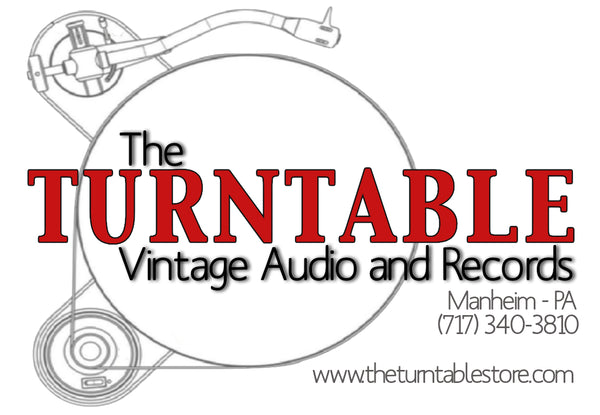Collection: Turntables
-
Aurex/Toshiba SR-410 Direct Drive Turntable * 1975 * no cartridge
Regular price $400.00 USDRegular priceUnit price / per -
Pro-Ject 1 Expression Carbon Classic Olive Turntable * BOX * New Audio Technica Cartridge
Regular price $400.00 USDRegular priceUnit price / per -
JVC 5250 Belt Drive Turntable * 1972 * Pickering Cartridge
Regular price $300.00 USDRegular priceUnit price / per -
RARE Technics SP-15 Direct Drive Turntable GOLD - Custom Poly Plinth ! - Rebuilt and Recapped !
Regular price $1,000.00 USDRegular priceUnit price / per -
Gemini XL-DD20 Semi Automatic DD Turntable * NEW Audio Technica Cartridge
Regular price $150.00 USDRegular priceUnit price / per -
Sony PS-T22 Semi-Automatic Direct-Drive Turntable * NEW Audio Technica Cartridge
Regular price $175.00 USDRegular priceUnit price / per -
JVC QL-A2 Direct Drive Turntable Quartz Locked * NEW Audio Technica Cartridge
Regular price $200.00 USDRegular priceUnit price / per -
Toshiba SRQ300 Quartz Locked Turntable * NEW Audio Technica Cartridge
Regular price $175.00 USDRegular priceUnit price / per -
MCS 6603 Direct Drive Turntable * NEW Audio Technica Cartridge
Regular price $250.00 USDRegular priceUnit price / per -
Sansui P-M55 Linear Tracking Turntable - Box
Regular price $200.00 USDRegular priceUnit price / per -
Audio Technica AT-LP7 Belt Drive Turntable * New AT3600 Cartridge * Box
Regular price $650.00 USDRegular priceUnit price / per -
Pro-Ject Classic Turntable - Ortofon Blue Cartridge ( needs new stylus ) - Leather Mat
Regular price $950.00 USDRegular priceUnit price / per -
Linn Sondek LP12 Belt Drive Turntable * REGA ToneArm * Original Box * No Cartridge
Regular price $1,500.00 USDRegular priceUnit price / per -
Music Hall MMF 2.1 Turntable * Clear Platter * Ortofon OM Cartridge
Regular price $150.00 USDRegular priceUnit price / per -
Curtis Mathes Complete Stereo System
Regular price $500.00 USDRegular priceUnit price / per -
Thorens TD-316 Turntable with Ortofon MC10 Super Moving Coil Cartridge ($250 value )
Regular price $650.00 USDRegular priceUnit price / per -
Thorens TD 165 Turntable * 1972-1976
Regular price $600.00 USDRegular priceUnit price / per -
Bang & Olufsen Beogram 9000 * Linear Tracking Turntable with MMC2 Cartridge
Regular price $950.00 USDRegular priceUnit price / per


















